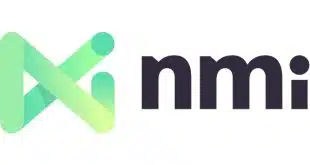MasterCard Inc. is planning new “digital enablement” fees, one for merchant acquirers and the other for card issuers, that will generate revenue for the network as mobile payments and the use of tokens that substitute for actual payment card numbers increase.
The fees are outlined in recent MasterCard bulletins for U.S. customers obtained by Digital Transactions News. Their arrival comes at a time when MasterCard is ramping up its Digital Enablement Service, a new platform that facilitates identification and verification of cardholders, and generates tokens or data packets for use by issuers and so-called digital wallet operators that link to a card’s primary account number (PAN). Unlike PANs, tokens are generally useless to data thieves. Customers of issuers using MasterCard’s service will be able to use their mobile devices for purchases through mobile applications, online, or at the point of sale.
The fees for issuers of MasterCard- and Maestro/Cirrus-branded cards take effect Sept. 1. They include a “Digital Enablement Service Lifecycle Management” fee of 10 cents per PAN, billed monthly. MasterCard also will charge a 50-cent “digitization” fee each time a mobile device is provisioned with a token, and 2.5 cents for calls to its “alternate network application programming interface.” MasterCard announced those fees in an Aug. 6 bulletin that it said was a clarification of fees published in an Aug. 1 pricing bulletin.
The new acquirer-side “Digital Enablement” fee takes effect next Jan. 5 and will be 1 basis point, or 0.01% of volume, billed weekly. The fee will apply to “select cardholder not present transactions” on consumer and commercial credit cards and signature-debit cards, a July 25 pricing bulletin says.
MasterCard did not respond to several Digital Transactions News requests for comment. The company, however, has hinted in recent months that it sees new digital services as ways to enhance data security while driving more transaction volume to its network—and generate more revenue. Mario Shiliashki, senior vice president and group head of U.S. Emerging Payments, discussed the Digital Enablement Service with analysts June 11 at Credit Suisse’s Future of Payments & Commerce Conference.
“Through that we can have … services for our issuers and other parties in the network to tokenize and digitize those transactions,” he said, according to a Seeking Alpha transcript. “If they choose to do that through us, of course that’s a revenue opportunity there, but generally again driving more transactions through the network that are much safer will, I think, be the main driver.”
MasterCard also said in the July bulletin that it will increase its existing Acquirer Brand Volume Fee by 1 basis point to 0.12% of volume, also effective Jan. 5. The increase will apply to all signature-debit charge volume and all consumer and commercial credit card volume under $1,000.
As is always the case, rising network fees are raising eyebrows in the acquiring community. Jeff Fortney, vice president of ISO channel management at Clearent LLC, a fast-growing merchant processor based in Clayton, Mo., says he’s trying to understand the nuances of MasterCard’s new fees. “A basis point doesn’t seem like a lot—a basis point on a $100 transaction is a penny,” he says. Even so, implementing the new pricing schedule will require cost-generating back-office changes, he says.
And while the term “card not present” is an old one in the industry, MasterCard is now using “cardholder not present” terminology, he notes. The linguistic difference might or might not have operational implications. “I don’t see the difference,” Fortney says.
Consultant Steve Mott of Stamford, Conn.-based BetterBuyDesign says the meaning of cardholder not present is “to be determined.” But he believes it’s one part of MasterCard’s effort, with a similar one underway at Visa Inc., to find ways of capitalizing on tokenization and the still-small but growing shift to mobile payments.
Mott also says the 50-cent digitization fee indicates MasterCard may be using static tokens to accommodate issuers whose back-office systems aren’t ready to handle more-secure dynamic, or one-time-use, tokens. “That gives security people palpitations,” Mott says. “They dumbed it down to accommodate the least-capable banks.”
A Visa spokesperson says Visa has not made any pricing changes recently regarding tokenization or e-commerce. The spokesperson also says Visa has no comment on MasterCard’s new fees.



